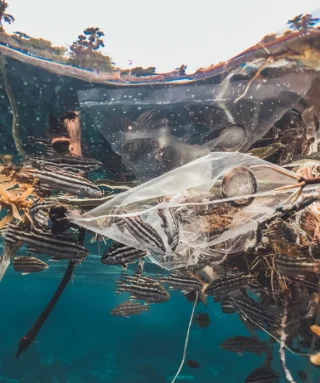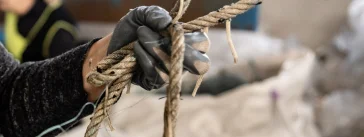

Since 2014, Ambibérica has been dedicated to collecting, sorting, and forwarding various types of fishing nets to specialized recycling facilities.


Every year, an estimated 640,000 tons of fishing gear are discarded into the oceans. This growing problem is alarming, and the Ellen MacArthur Foundation warns that without intervention, the ocean will contain more plastic than fish by 2050.
We have already redirected over 4 million tons of this waste to be transformed into new products you use in your daily life. These products include chains, carpets, clothing, and technical fabrics, produced through both chemical and mechanical recycling processes.



The process of receiving and sorting fishing nets by Ambibérica follows several steps to ensure efficiency and quality.
Fishing nets are received at our facilities, where they undergo an initial sorting to separate possible contaminants such as large metal objects, buoys, and other larger contaminants.
After this initial sorting, fishing nets are classified according to the type of polymer, as well as thickness and size, to be directed to the appropriate recycling process.
Fishing nets are fragmented into small sizes and then subjected to a cleaning process where organic waste, plastics, hooks, and any sand and rocks caught in the nets are removed, thus avoiding contamination of the entire process.
Next, the fishing nets are baled into bundles of varying dimensions depending on the mechanical or chemical processes in which they will be used, based on material characteristics.